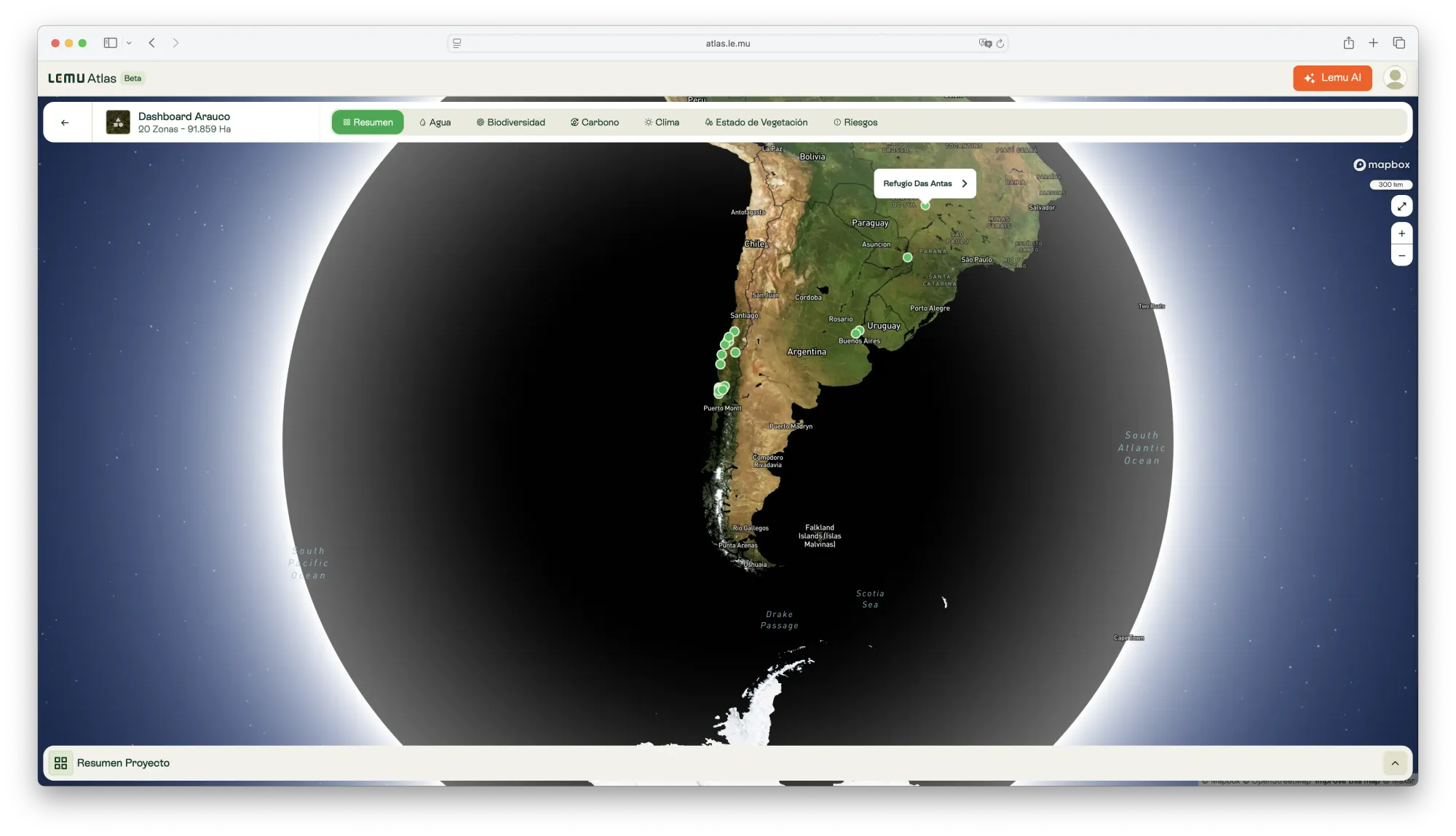Atlas Indicators
Explore 17 science-based indicators that make nature visible. From water and carbon to biodiversity and climate, Atlas translates complex environmental data into clear, actionable insight.

Making nature visible through measurable signals
Lemu Atlas brings together a unique set of indicators that translate complex environmental data into clear, actionable insight. Each indicator is grounded in science, powered by Earth observation and ecological research, and designed to help businesses, governments, and communities understand their relationship with nature.
What are indicators?
Indicators are standardised measurements that capture the state, trends, and risks of ecosystems. They allow us to answer key questions:
- What species and habitats are present in a given area?
- How much carbon is stored, and is it increasing or declining?
- Where are ecosystems under pressure from climate, land use, or human activity?
- What risks need to be managed to ensure long-term resilience?
Why indicators matter
By organising environmental data into indicators, Atlas makes it possible to:
- Monitor biodiversity, carbon, water, vegetation, and climate in a single platform.
- Compare areas consistently across time and space.
- Inform conservation strategies, corporate decision-making, and regulatory compliance.
- Unlock Nature Intelligence: turning data into decisions.
Categories in Atlas
All current indicators are grouped into six categories:
- 🌊 Water — availability, risk, and security.
- 🐾 Biodiversity — presence, risk, and observations of species.
- 🌳 Carbon — above- and below-ground carbon stocks and trends.
- ☀️ Climate — land-surface temperature and related drivers.
- 🌱 Vegetation — condition and change in plant cover.
- ⚠️ Risks — human and ecological pressures shaping ecosystem resilience.
Indicators Authored by Lemu
The following 10 indicators are developed directly by Lemu, integrating satellite data, ecological modelling, and artificial intelligence to provide unique insights into biodiversity, carbon, and ecosystem change:
- Rarity-weighted Species Richness (Biorarity)
- Species Richness
- Species Presence
- LemuRank
- Total Biomass Carbon
- Below-ground Biomass Carbon
- Above-ground Biomass Carbon
- Biomass Carbon Trend (CarbonFlux)
- NDVI Analysis
- NDVI Trend (Greenpulse)
These Lemu-authored indicators are designed to close critical gaps in nature data, making it possible to measure biodiversity and ecosystem health at resolutions and scales not previously available.
Sources and transparency
Every indicator includes its author — the dataset or institution responsible — and, where available, direct links to explore the source. Atlas combines globally recognised datasets (e.g., WRI Aqueduct, GBIF, IUCN, NASA, WorldPop) with proprietary Lemu indicators built from hyperspectral satellite imagery, ecological modelling, and AI.